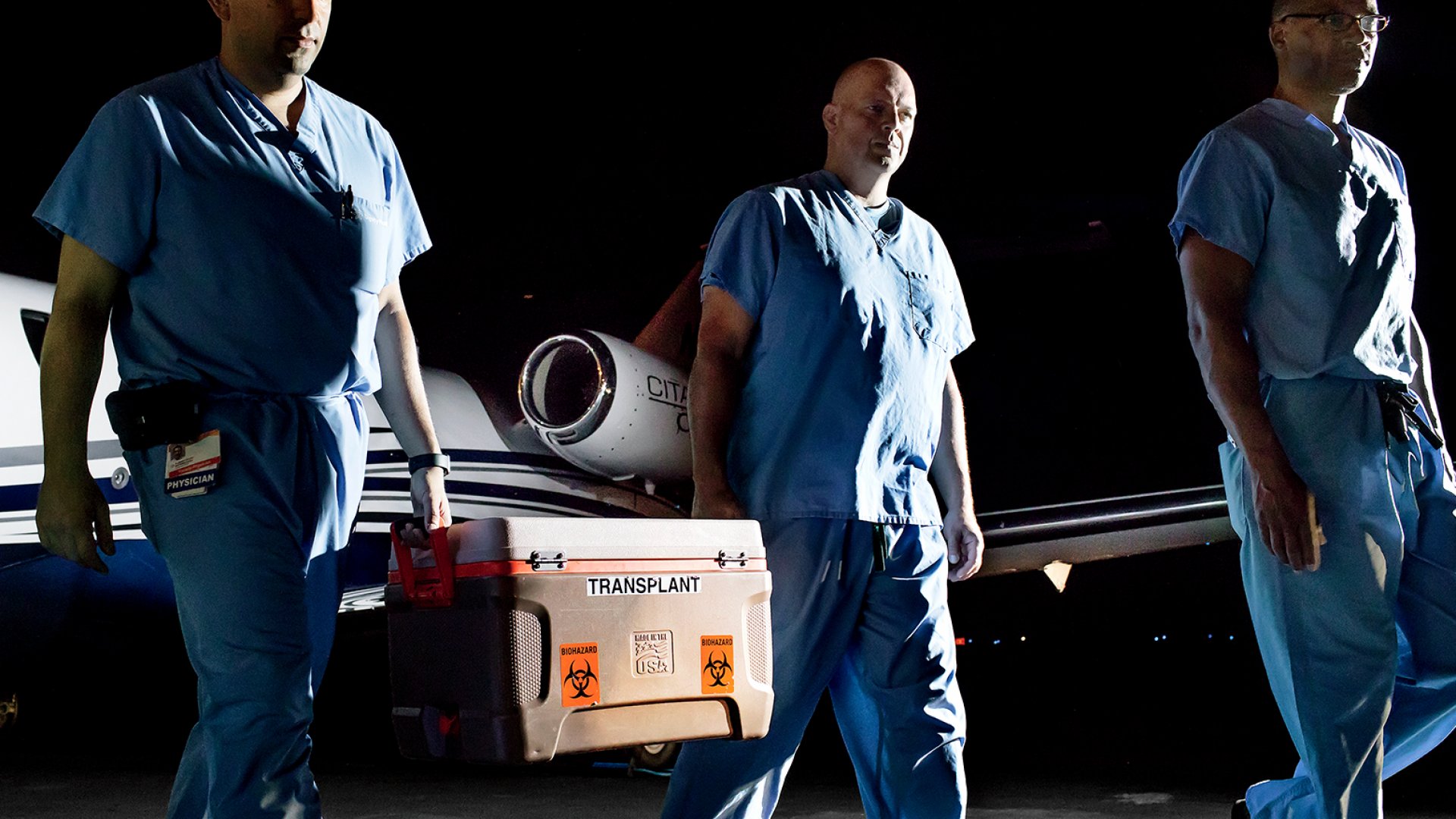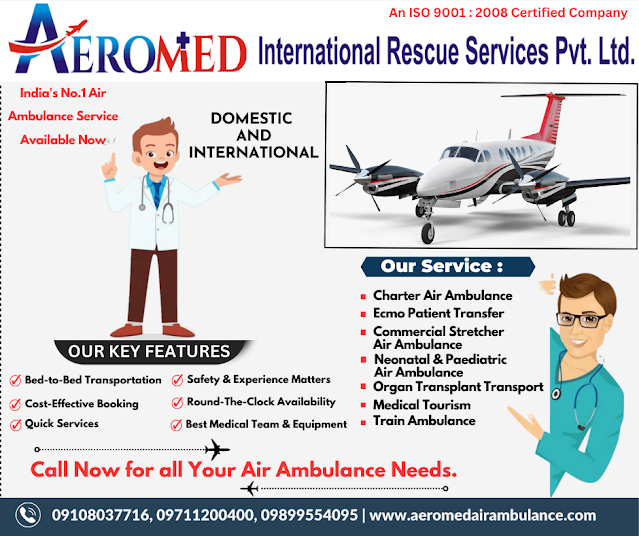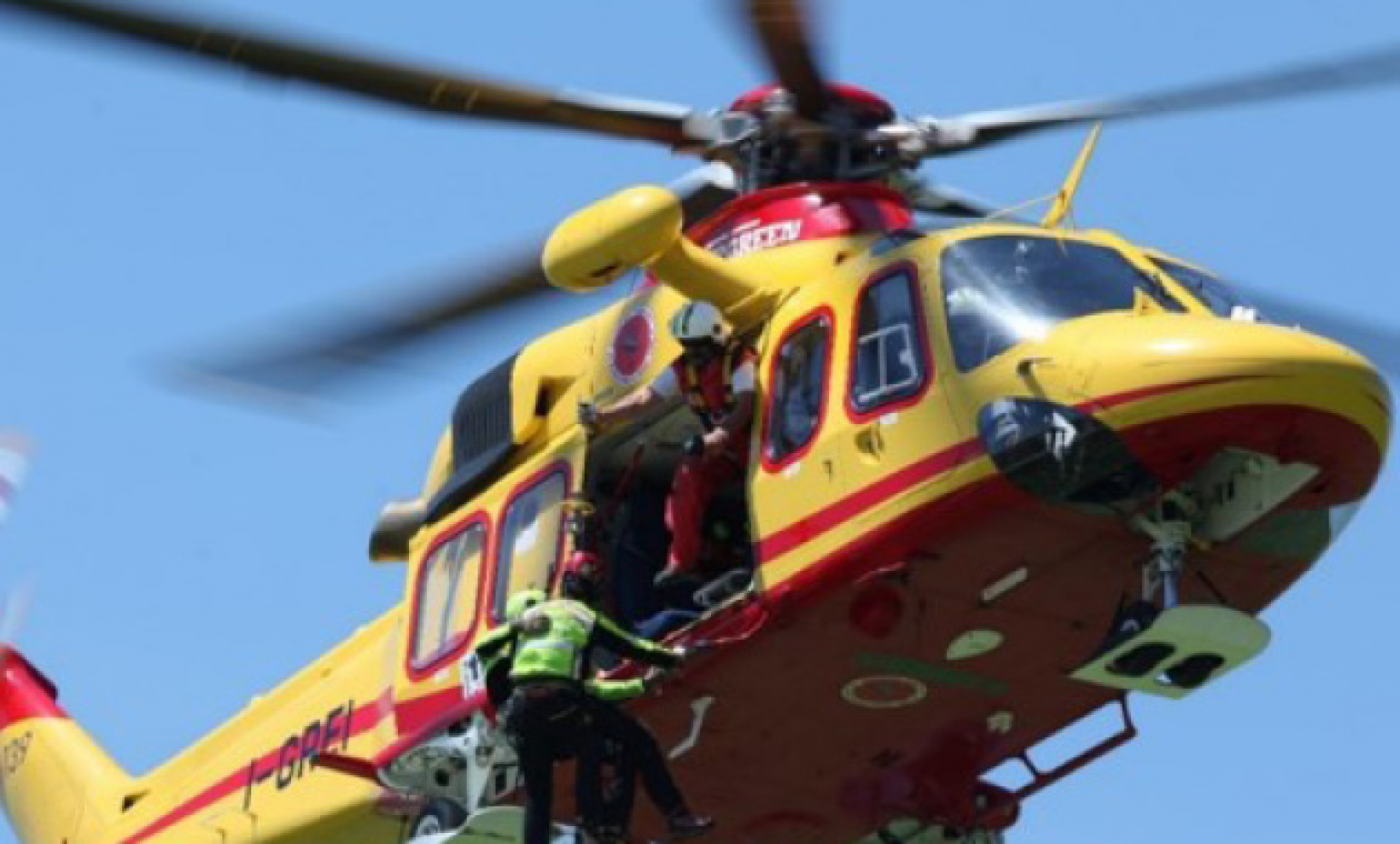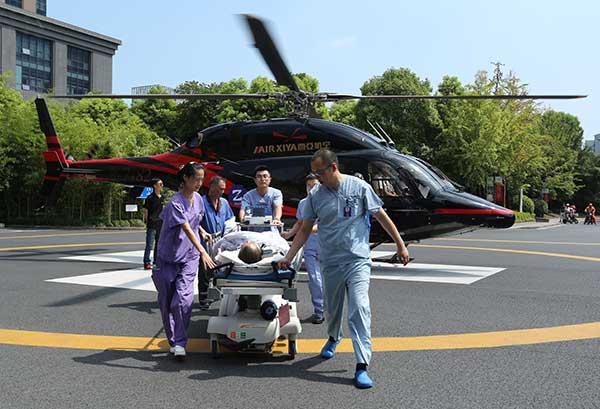Imagine a scenario where time is of the essence, where every second counts in the race against life. Picture this: a critically ill patient is in desperate need of a life-saving organ transplant, but the nearest suitable organ is located hundreds of miles away. How do you transport that organ quickly and safely? That’s where air ambulances come into the picture. In this article, we will explore the vital role played by air ambulances in delivering organs for time-critical transfers. Strap in, folks, because we’re about to take off on a journey filled with urgency, precision, and life-changing missions.
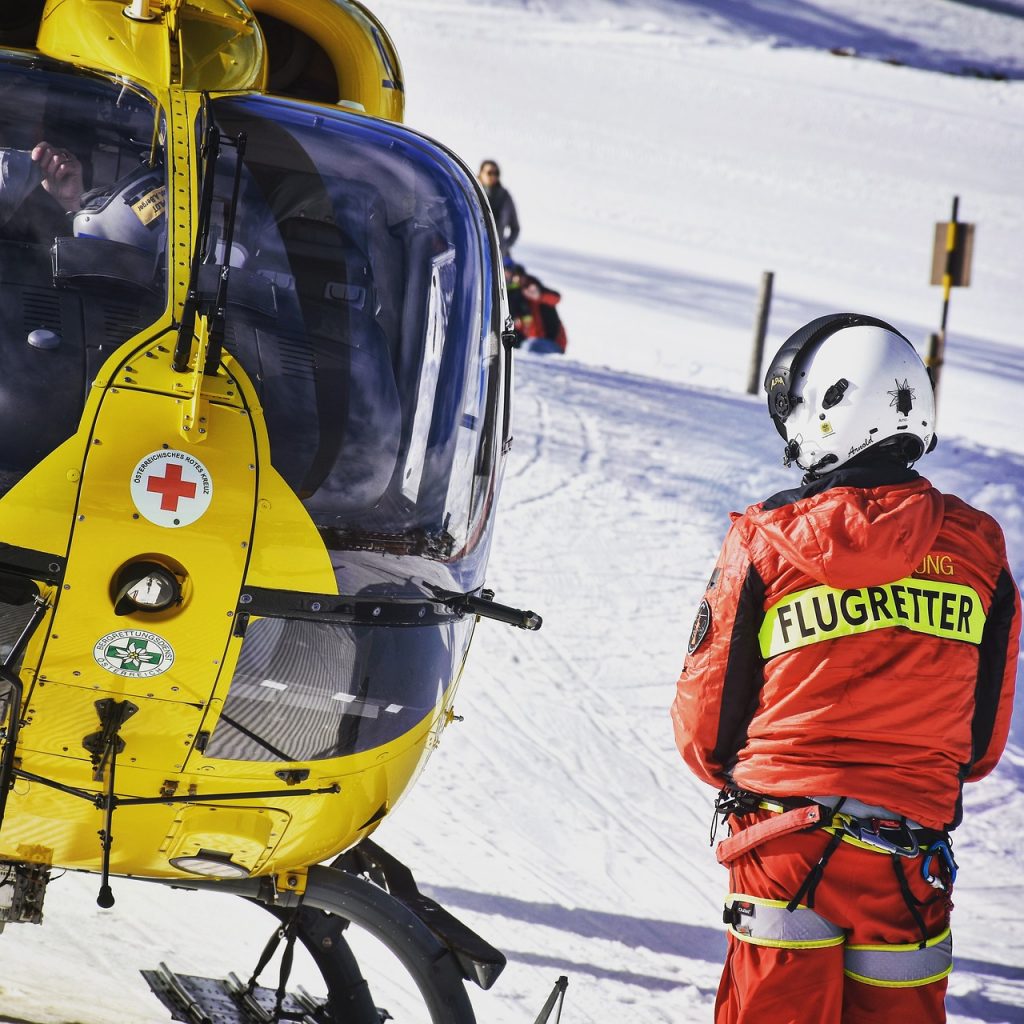
1. What are Air Ambulances?
Air ambulances are specialized aircraft used for medical emergencies and patient transport. They are equipped with medical equipment and staffed by trained medical professionals to provide critical care during transit. Air ambulances are primarily used for rapid transportation of patients who require immediate medical attention, often in situations where traditional ground transportation would take too long or is not feasible.
1.1 Definition
Air ambulances, also known as medical helicopters or air medical services, refer to the use of aircraft for medical emergencies and patient transportation. These aircraft are equipped with advanced medical equipment and staffed by trained medical personnel to provide lifesaving interventions during transit.
1.2 Types of Air Ambulances
There are various types of air ambulances used for different situations. The most common types include helicopters and fixed-wing aircraft. Helicopters are typically used for short-distance transport and can access remote or difficult-to-reach areas. Fixed-wing aircraft, on the other hand, are used for long-distance or intercontinental transport and have the capability to accommodate more equipment and medical personnel.
2. Importance of Time-Critical Deliveries for Organ Transplants
Organ transplants are life-saving procedures that rely on the timely delivery of organs from donors to recipients. As organs have a limited time outside the human body, the efficiency of organ transport plays a crucial role in ensuring the success of transplant surgeries.
2.1 The Role of Air Ambulances
Air ambulances play a vital role in time-critical deliveries for organ transplants. With their ability to rapidly transport organs to the intended recipients, air ambulances significantly reduce the time required for transportation, thereby maximizing the viability of organs and increasing the chances of successful transplantation.
2.2 Brief Overview of Organ Transplants
Organ transplantation involves the surgical removal of a healthy organ from a donor and its placement into a recipient suffering from organ failure. Organs such as the heart, liver, lungs, kidneys, and pancreas can all be transplanted. These life-saving procedures offer hope and a better quality of life for patients with end-stage organ diseases.
2.3 Time Sensitivity of Organ Transplants
Time sensitivity is a critical factor in organ transplants. Organs have a limited ischemic time, which is the time they can survive outside the body while maintaining their viability. The ischemic time varies depending on the organ type but generally ranges from a few hours to a few days. It is essential to minimize the ischemic time and ensure the swift delivery of organs to recipients for successful transplantation.
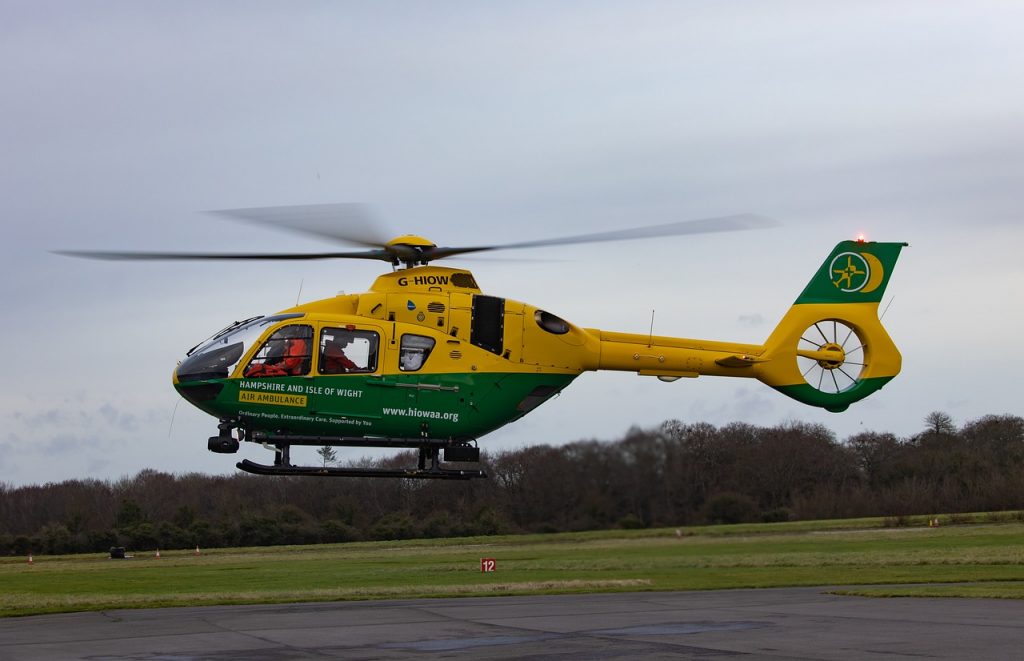
3. Advantages of Air Ambulances for Organ Transports
Air ambulances offer several advantages for the transport of organs, particularly in time-critical deliveries for organ transplants.
3.1 Speed and Efficiency
One of the key advantages of air ambulances is their speed and efficiency in transporting organs. They can cover long distances in a relatively short time, significantly reducing the transit time compared to ground transportation. This accelerated transport ensures that organs reach their recipients in optimal condition, maximizing the chances of successful transplantation.
3.2 Access to Remote Locations
Air ambulances have the capability to access remote locations that may be challenging to reach by traditional ground transportation. This is especially important for organ procurement, as organs can be donated from different regions and need to be transported quickly to the transplant center. Air ambulances can overcome geographical barriers and ensure timely delivery of organs, even from remote or hard-to-reach areas.
3.3 Dedicated Medical Staff and Equipment
Air ambulances are equipped with specialized medical equipment and staffed by highly skilled medical professionals. These medical teams are trained in critical care and have the expertise to manage and stabilize organs during transport. Having dedicated medical staff and advanced equipment onboard ensures that organs are properly monitored and maintained throughout their journey, increasing the likelihood of successful transplantation.
3.4 Specialized Handling of Organs
Air ambulances are designed to meet the specific requirements of organ transport. For example, they have temperature-controlled compartments to ensure the preservation of organs during transit. These specialized features, combined with the expertise of the medical teams, enable air ambulances to provide the optimal environment for organ transportation, protecting organs from damage and maintaining their viability.
4. Challenges and Considerations
While air ambulances provide crucial support for organ transports, there are several challenges and considerations that need to be addressed for the successful execution of these missions.
4.1 Weather and Air Traffic
Weather conditions and air traffic can significantly impact the timely delivery of organs. Adverse weather conditions or airspace congestion may cause delays or make certain routes inaccessible. Air ambulances must closely monitor weather patterns and collaborate with air traffic control to ensure safe and efficient transportation, especially during critical organ transport missions.
4.2 Coordination and Logistics
Coordinating organ transport involves multiple stakeholders, including the organ donor, transplant center, transportation team, and organ procurement organizations. The logistics of coordinating these entities and ensuring seamless communication and coordination can be complex. Timely coordination and efficient logistics are crucial to minimize delays and optimize the transport process.
4.3 Safety and Regulations
Air ambulance services for organ transport must adhere to strict safety regulations to ensure the well-being of both patients and medical teams. These regulations govern aspects such as aircraft maintenance, crew training, and safety protocols. Compliance with safety standards is essential to mitigate risks and maintain the highest level of safety during organ transports.
4.4 Cost Factors
Air ambulance services, particularly for organ transports, can be expensive. The cost includes factors such as aircraft maintenance, fuel, crew salaries, and specialized medical equipment. It is important to consider the financial implications and potential cost burdens when planning organ transport missions and to ensure that the costs are managed appropriately within the healthcare system.
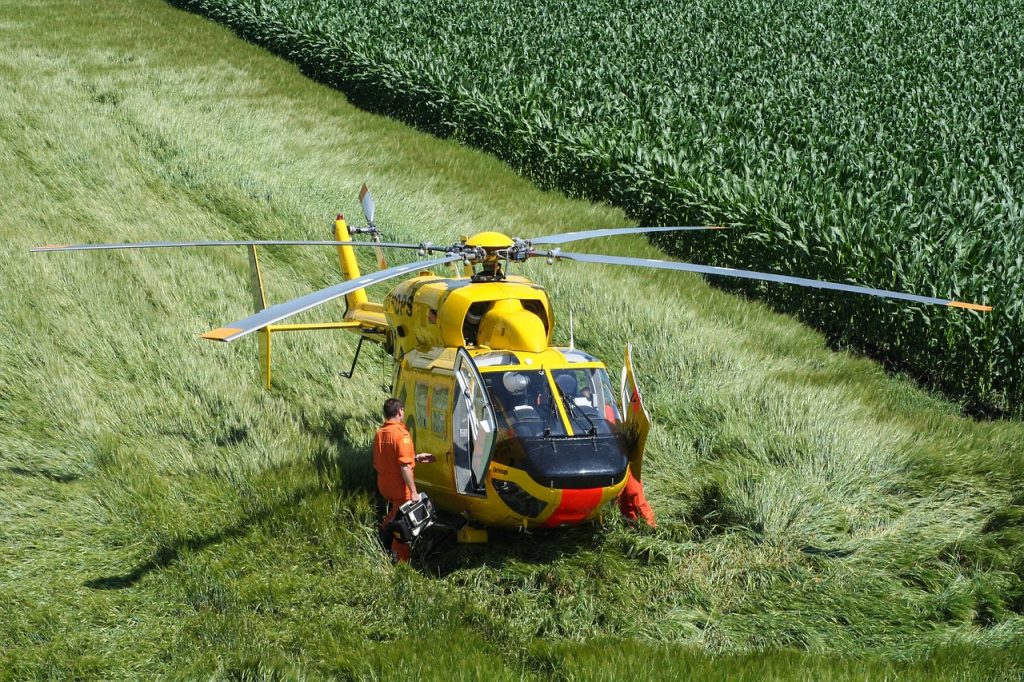
5. Collaboration with Organ Procurement Organizations
Collaboration between air ambulance services and organ procurement organizations plays a critical role in ensuring effective organ transport.
5.1 Role of Organ Procurement Organizations
Organ procurement organizations (OPOs) are responsible for coordinating the retrieval and allocation of organs for transplantation. They work closely with transplant centers, medical professionals, and transportation teams to facilitate the timely and safe transport of organs. OPOs play a pivotal role in matching donors with recipients and ensuring that organs are transported efficiently.
5.2 Collaboration and Communication
Effective collaboration and communication between air ambulance services and OPOs are essential for successful organ transport. This collaboration involves sharing critical information about organ availability, transportation logistics, and recipient readiness. Open lines of communication and a seamless flow of information are vital to ensure that organs are transported promptly and safely.
5.3 Legal and Ethical Considerations
The transportation of organs involves legal and ethical considerations that must be adhered to. These include consent from the donor or their family, adherence to privacy and confidentiality regulations, and compliance with laws related to organ transplantation. Air ambulance services and OPOs work together to navigate these legal and ethical complexities to ensure that organ transport is conducted in a compliant and ethical manner.
6. Case Studies and Success Stories
Examining case studies and success stories in the field of air ambulances for organ transports provides valuable insights into the impact of these services.
6.1 Prominent Air Ambulance Providers
Several prominent air ambulance providers specialize in organ transport and have a proven track record of successful missions. These providers often collaborate with transplant centers and organ procurement organizations to ensure efficient and safe organ transport. Examining their case studies can shed light on best practices and innovative approaches in the field.
6.2 Notable Transplant Organizations
Transplant organizations that have effectively integrated air ambulance services into their workflows can serve as role models for maximizing the benefits of these services. These organizations often have well-established relationships with air ambulance providers and have implemented streamlined processes for organ transport.
6.3 Impactful Organ Transport Missions
Various successful organ transport missions have had a significant impact on the lives of both donors and recipients. These stories highlight the importance of timely organ delivery and the positive outcomes that can be achieved through the use of air ambulances. Sharing these impactful stories can create awareness and appreciation for the critical role of air ambulances in organ transplants.
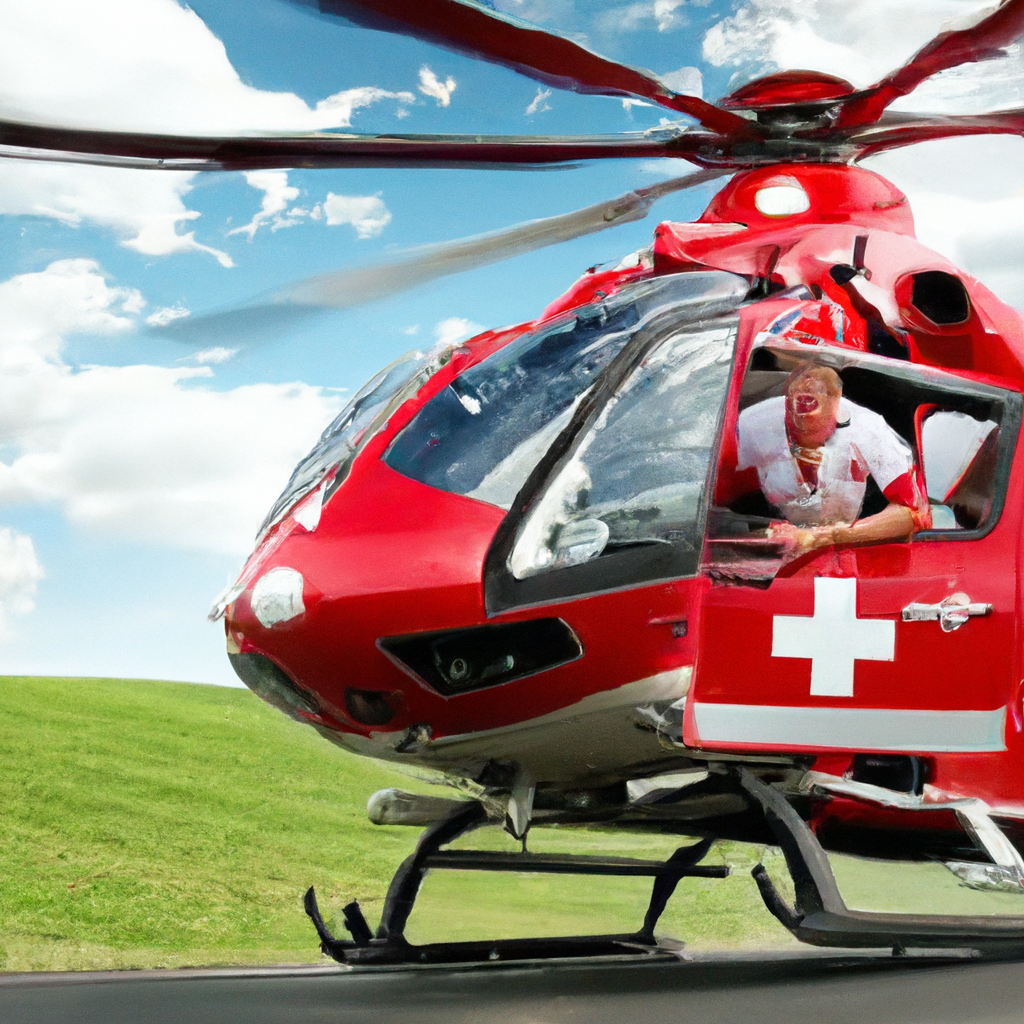
7. Future Innovations and Technologies
The field of air ambulances and organ transports continues to evolve, with various innovations and technologies shaping its future.
7.1 Advancements in Air Ambulance Technology
Advancements in technology are driving improvements in air ambulance services. These include innovations in aircraft design, medical equipment, and communication systems. For example, the development of more fuel-efficient aircraft and the integration of advanced medical monitoring devices enhance the capabilities of air ambulances and contribute to safer and more efficient organ transports.
7.2 Drone Transports for Organ Donation
Drones are emerging as a potential alternative for organ transportation, particularly in time-sensitive cases. Their ability to bypass traffic and access remote locations quickly makes them a promising option for organ donations. Research and testing are underway to develop safe and reliable drone transport systems for organs, which could further revolutionize the field of organ transplantation.
7.3 Integration with Telemedicine
Telemedicine, the use of telecommunications technology to provide healthcare remotely, has the potential to enhance the capabilities of air ambulances for organ transporting. Through telemedicine, medical professionals can remotely access real-time patient data, provide consultations, and guide medical interventions during transit. This integration of telemedicine with air ambulances can improve patient outcomes and expand access to specialized care.
8. Safety and Quality Assurance Measures
Ensuring the safety and quality of air ambulance services for organ transports involves various measures and protocols.
8.1 Training and Certifications for Air Medical Teams
Air medical teams undergo specialized training to provide critical care during organ transports. This training includes advanced life support skills, patient stabilization techniques, and handling of medical equipment. Certifications and ongoing education ensure that medical teams remain up-to-date with the latest advancements and are equipped to handle emergencies during transit.
8.2 Maintenance and Inspections
Routine maintenance and regular inspections are crucial for the safe operation of air ambulances. These aircraft undergo rigorous checks to ensure that they meet all safety standards and are equipped with functioning medical equipment. Maintenance protocols, as well as adherence to industry regulations, contribute to the overall safety and reliability of air ambulances used for organ transports.
8.3 Continuous Improvement Initiatives
Air ambulance providers and organ procurement organizations prioritize continuous improvement initiatives to enhance the quality and efficiency of organ transports. Regular performance reviews, data analysis, and feedback assessments help identify areas for improvement and implement strategies to optimize processes. These initiatives ensure that air ambulance services remain at the forefront of advancements in organ transport.

9. Awareness and Education
Raising awareness and providing education about organ transplants and air ambulance services are crucial for the general public and healthcare professionals.
9.1 Public Education on Transplants and Air Ambulance Services
Public education helps dispel myths and misconceptions about organ transplants and air ambulance services. It is important to raise awareness about the need for organ donations, the impact of transplants on recipients’ lives, and the critical role of air ambulances in facilitating successful organ transports. Educating the public can encourage more individuals to become organ donors and foster support for air ambulance services.
9.2 Fundraising and Community Support
Fundraising initiatives and community support play a significant role in sustaining air ambulance services for organ transports. Organizing fundraising events, engaging with local communities, and collaborating with non-profit organizations can generate the necessary resources to ensure the availability and accessibility of air ambulances. Community involvement and support contribute to the continuation of life-saving organ transport missions.
9.3 Media Coverage and Advocacy
Media coverage and advocacy efforts help raise public awareness and promote the importance of air ambulance services in organ transplants. By highlighting successful organ transport stories and showcasing the impact of these services, media coverage can generate positive attention and support for air ambulance services. Advocacy initiatives can contribute to policy changes and ensure the continued availability of air ambulances for organ transports.
10. Conclusion
Air ambulances play a crucial role in time-critical deliveries for organ transplants. With their speed, efficiency, and specialized medical capabilities, they provide a lifeline for patients in need of immediate organ transplantation. The advantages they offer, such as access to remote locations and dedicated medical staff, contribute to the success of organ transports. Despite the challenges and considerations, collaboration between air ambulance services and organ procurement organizations has proven to be instrumental in facilitating safe and timely organ delivery. The future holds promising advancements in technology, including drones and telemedicine integration, which will further revolutionize the field of organ transplantation. Ensuring safety and quality assurance measures, raising awareness, and fostering community support are crucial for the continued availability and effectiveness of air ambulance services in organ transports. By prioritizing these factors, we can continue to save lives and improve the outcomes of organ transplantation.
